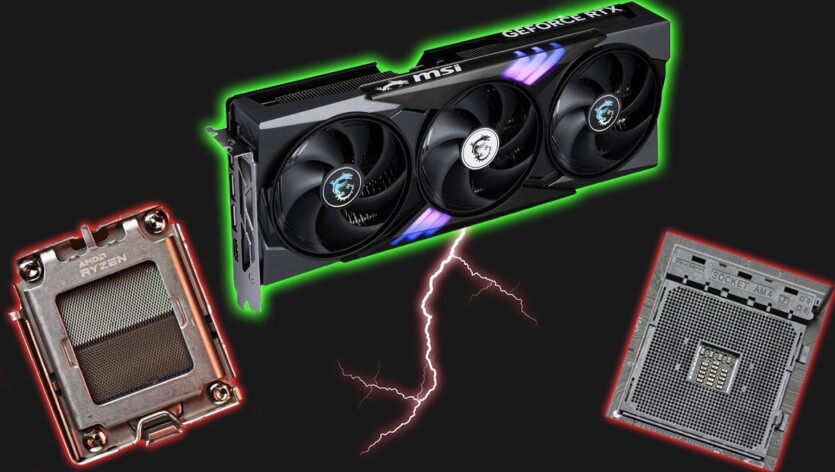
Every year, the system requirements of most new games are steadily increasing, but most PC gamers are in no hurry to upgrade their computers, using the platforms of previous generations that have been proven over the years. In this article, we will show you MSI GeForce RTX 5060 Ti 16G Gaming Trio OC we will try to figure out whether it is necessary to change the socket to be able to play modern game development projects.
Content
- 1 What did you play before and how do you play now?
- 2 Upgrading a video card without changing the platform: does it make sense?
- 3 NVIDIA DLSS 4 — improve the gaming experience
- 4 Is the AM4 — platform still viable?
- 5 Test benches and testing methodology
- 6 Testing gaming performance
- 7 Summarizing the results
What did you play before and how do you play now?
In 2025, video cards NVIDIA GeForce RTX 50 have significantly raised the level of gaming experience. However, many gamers according to Steam statistics still continue to use FullHD resolution. The fact is that the life cycle of computer hardware on a global scale is still very inert. It is not changing as rapidly as hardware manufacturers would like it to. What is the reason for this?
In fact, there are quite a few reasons for this: from prices that make the next upgrade a rather expensive part of a gamer’s budget to a large number of outdated FullHD monitors that are not even capable of using the latest video adapters.
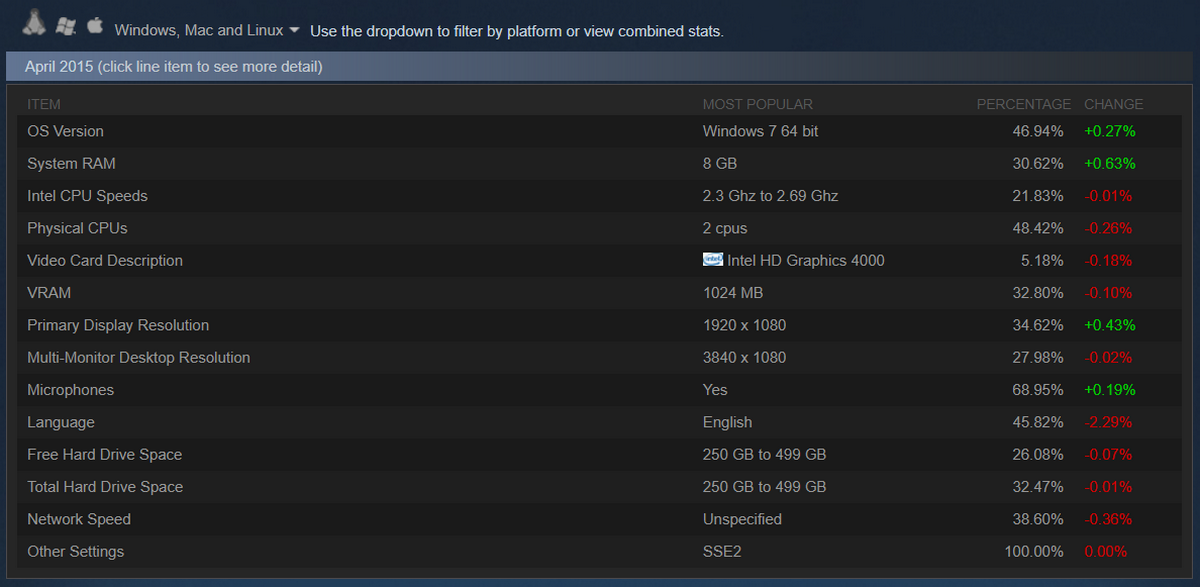 If we rewind 10 years in the past, we can see that in 2015, 1080p was already the king of gaming (34.62%), although it was still competing with «relic types of monitors»: 1366×768 px (26.28%), 1600×900 px (7.42%), and 1440×900 px (5.25%). This was the period of FullHD’s formation, when rudimentary standards were coming to an end.
If we rewind 10 years in the past, we can see that in 2015, 1080p was already the king of gaming (34.62%), although it was still competing with «relic types of monitors»: 1366×768 px (26.28%), 1600×900 px (7.42%), and 1440×900 px (5.25%). This was the period of FullHD’s formation, when rudimentary standards were coming to an end.
In 2020, FullHD enjoyed a period of undivided dominance and was used in about 64% of gaming builds. However, an interesting trend can already be seen — the growth of the QuadHD format share. This was facilitated by the increase in video memory and, of course, the launch of a family of graphics cards GeForce RTX 20 Serieswhich revolutionized the gaming world with RT cores and DLSS.
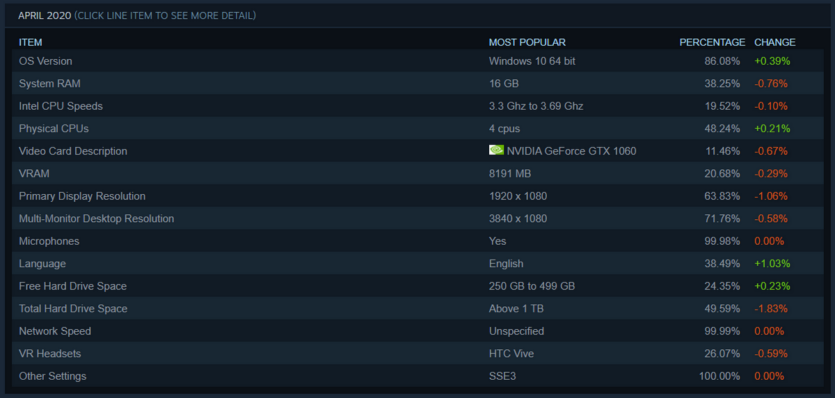
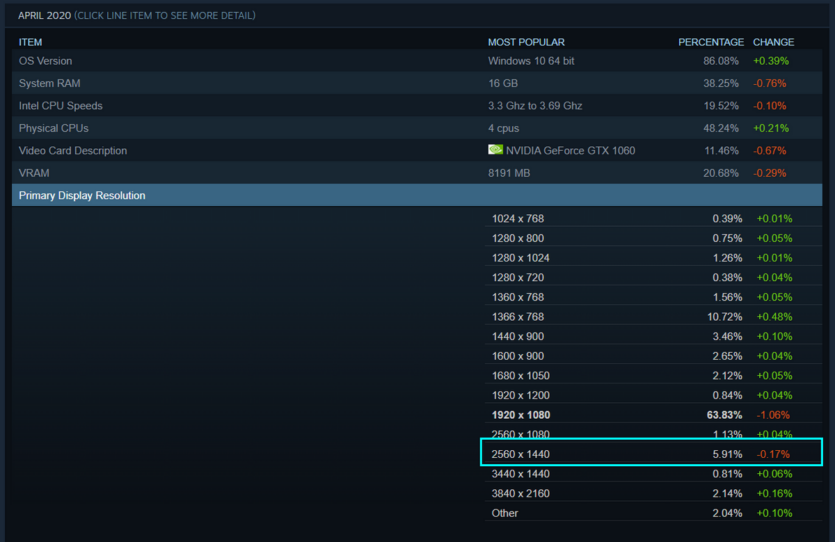
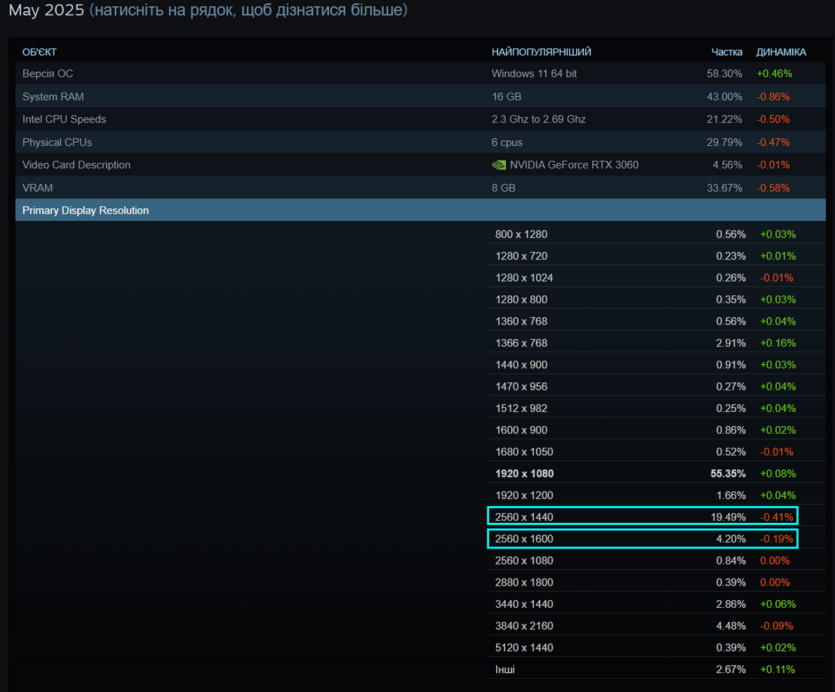
In 2025, we can see a clear trend that despite the dominance of FullHD, the share of QuadHD has reached almost 20% in gaming PCs. If earlier the «deterrent to» in the frame rate was mainly the video chip, now the main obstacle to the mass adoption of 1440p is the amount of video memory.
Upgrading a video card without changing the platform: does it make sense?
As you can see, many gamers are still in no hurry to change their PCs that have been tested in thousands of game battles. Nevertheless, the release of video cards NVIDIA GeForce RTX 50 encourages you to think about upgrading. After all, thanks to the improved architecture — Blackwell overall performance in modern game development projects is growing. Also, the gaming landscape is rapidly improving with new technologies — DLSS 4, Multi Frame Generation, Ray Tracing, Path Tracing, which we described in detail in our previous article.
The increase in system requirements in modern games leaves little alternative: either we think about upgrading or we put up with poor FPS, staters, and «framerate» frames. Upgrading a graphics card often entails a complete platform upgrade, as there is no certainty that the outdated processor and memory will not become a so-called «botleneck» negating the advantages of the new graphics card. At the same time, it is hoped that DLSS 4 with Multi Frame Generation will improve the frame rate without overloading the processor. In the following sections, we will try to check it out.
NVIDIA DLSS 4 — improve the gaming experience
NVIDIA graphics cards GeForce RTX 50 fully support DLSS 4 (Deep Learning Super Sampling) technology, which improves the gameplay in hundreds of game development projectsThe number of which is constantly expandingNVIDIA DLSS 4 is a set of proprietary neural rendering technologies that are processed using fifth-generation Blackwell architecture tensor cores. These include the following technologies:
- DLSS Multi Frame Generation (MFG) — uses artificial intelligence to create additional frames in games, increasing FPS four times compared to traditional rendering;
- DLSS Super Resolution (DLSS SR) — improves the image and allows you to run games in lower resolutions, and then uses artificial intelligence to restore the picture to high quality, preserving details and clarity, while increasing FPS;
- Deep Learning Anti Aliasing (DLAA) is an anti-aliasing technology that uses artificial intelligence to improve the image quality of games and objects by making them smoother and less pixelated.
All of these technologies have had a significant impact on improving gaming performance, increasing image quality and performance. Thanks to them, gamers get not only amazing detail and realism, but also a significant increase in frame rate even in the most demanding gaming projects.
Is the AM4 — platform still viable?
AM4 is rightfully considered one of the most respected long-livers among PC gaming enthusiasts. It was introduced at the end of 2016, making a significant leap in development compared to previous AMD platforms. The AM4 paired with Zen has not only challenged Intel’s dominance, but has also received surprisingly long-lasting support. It has something to be proud of, as it is compatible with (five!) generations of processors — from the first-born on the Bristol Ridge architecture to the fifth-generation models on the Zen 3 architecture.
At the end of this year, the AM4 platform will be nine years old! By the standards of the computer world, this is a very long time, which can only be rivaled by the legendary 775 socket from the mid-noughties
And so the question arises: can a budget-conscious gamer upgrade their graphics card, staying with AM4, but still expecting comfortable QuadHD gaming?
Test benches and testing methodology
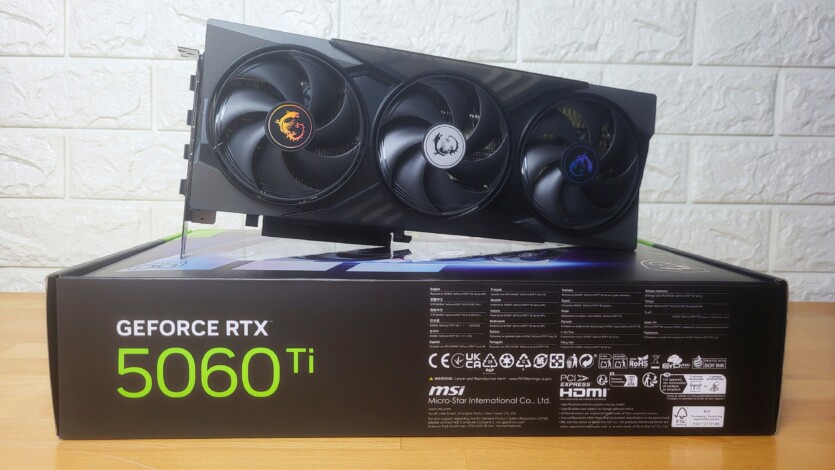
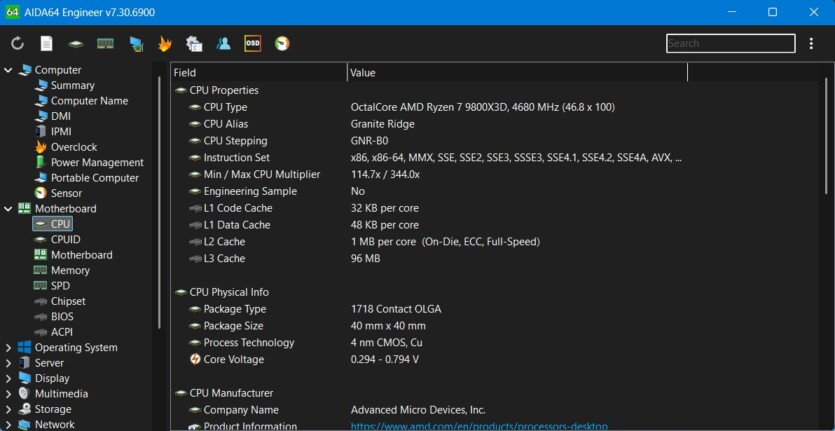
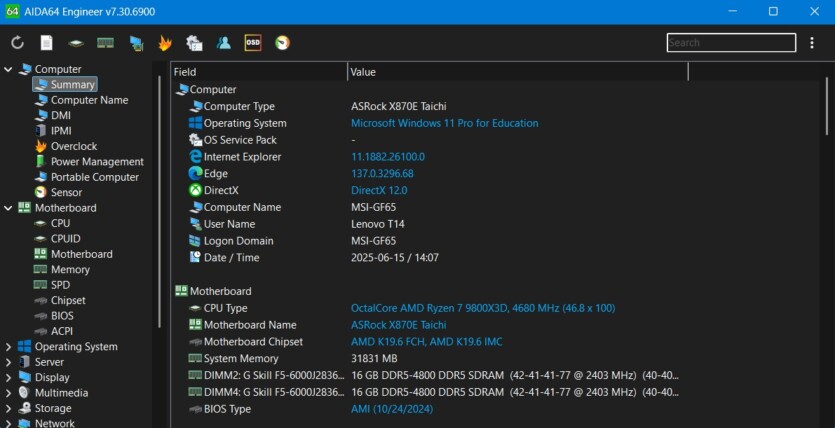
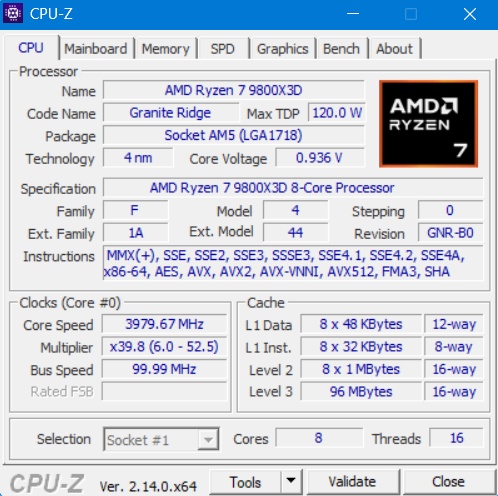
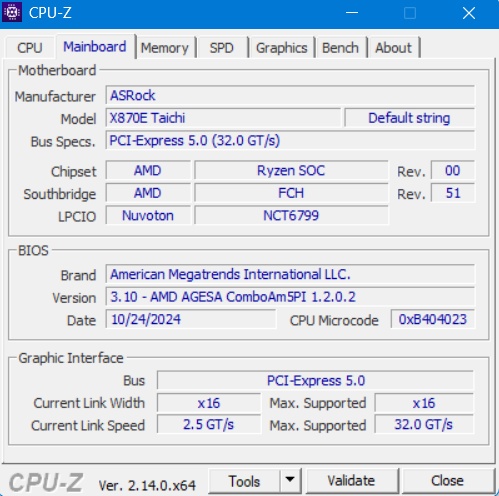
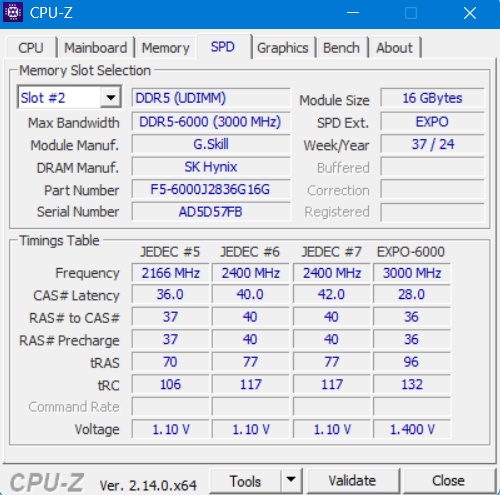
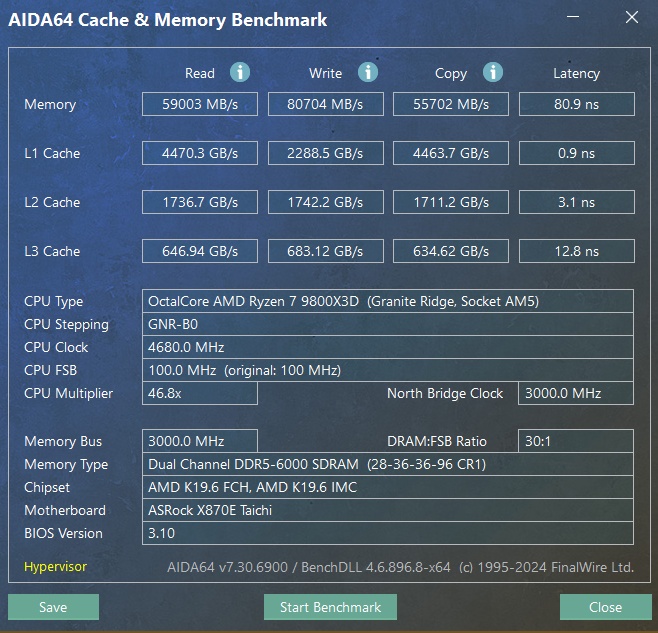
For the tests, I will use a video card from NVIDIA — MSI GeForce RTX 5060 Ti 16G Gaming Trio OC which offers good performance for FullHD and QuadHD gaming. Featuring a GB206 GPU with 4608 CUDA cores, 16GB of GDDR7 memory, neural technology, and Multi Frame Generation, it delivers high-quality images and a brisk FPS in modern games, especially when using DLSS 4.
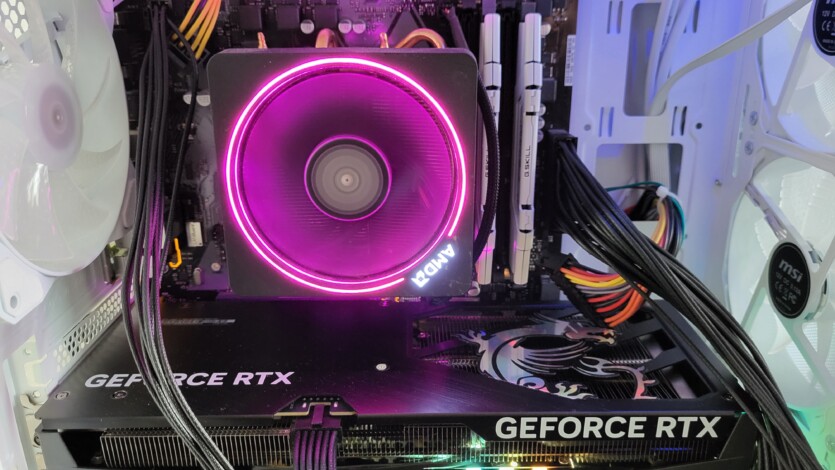
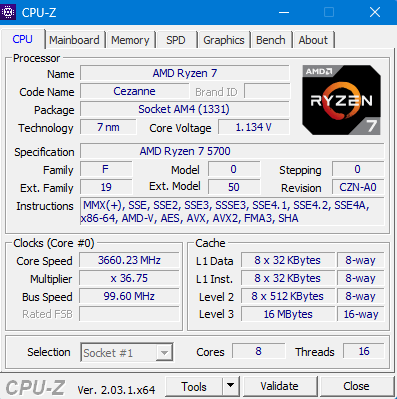
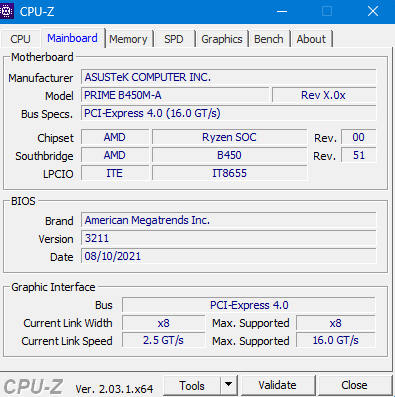
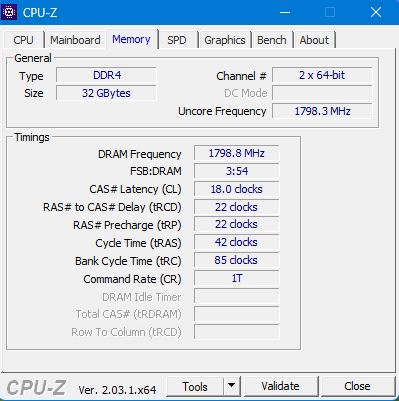
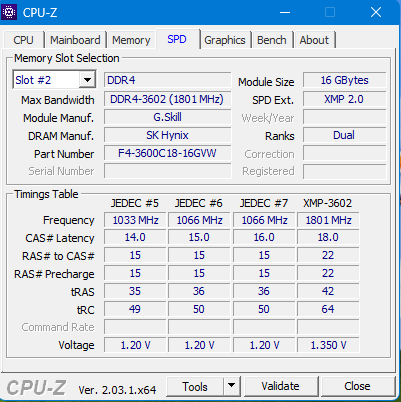
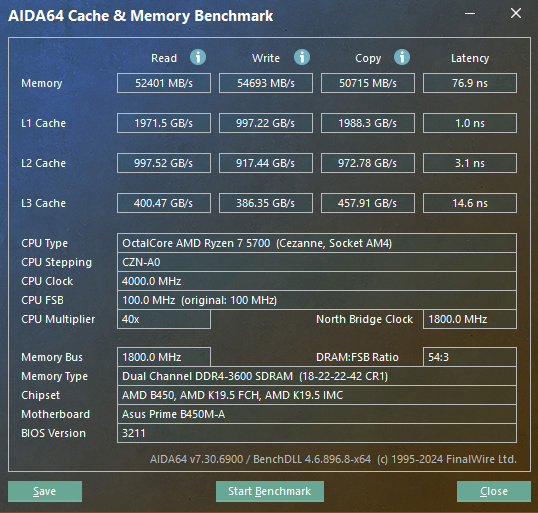
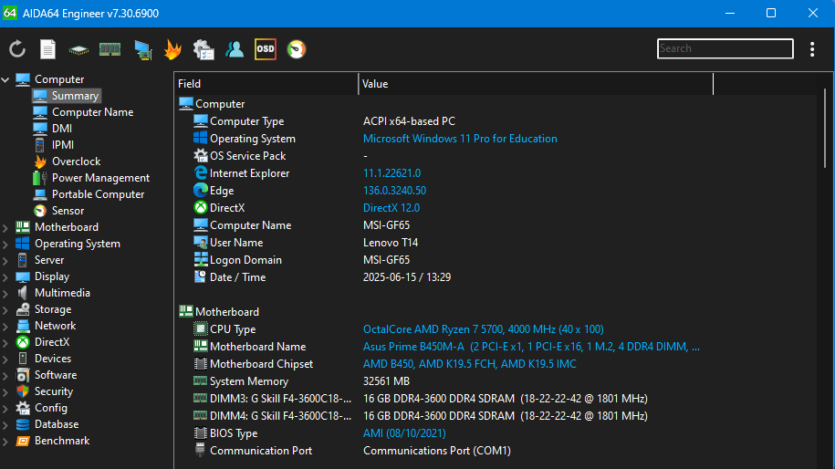
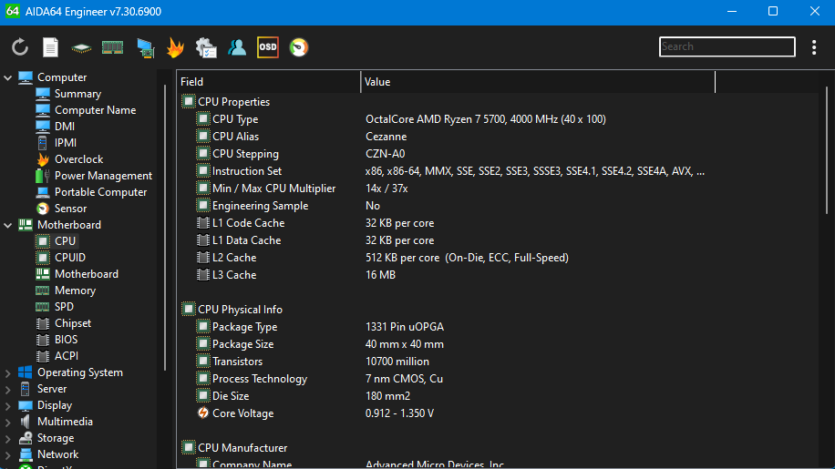
Moving on from words to deeds, we have prepared two test stands as part of the experiment. One will be based on the AM4 platform, and the other should be as modern as possible, as a benchmark to understand the difference in gaming tests. It should be said right away that the goal of testing on a veteran chipset (AM4) was not to find the most top-of-the-line solutions (such as X470), because we are focused on the average gamer according to Steam statistics.
| Test bench AM5 | AM4 test bench |
|
Video card MSI GeForce RTX 5060 Ti 16G Gaming Trio OC |
|
|
|
Testing gaming performance
Before we start testing, it’s worth mentioning: what could theoretically reduce the gaming frame rate on AM4 compared to AM5? The B450 has PCIe 4.0 x16, which limits the video card’s bandwidth MSI GeForce RTX 5060 Ti 16G Gaming Trio OC supports 8 lines within PCIe 5.0 (32 GB/s). Therefore, in fact, we have a twofold difference in bandwidth compared to PCIe 4.0 x16 (see the table for details).
| PCIe generation | x1 | x2 | x4 | x8 | x16 |
| Gen 3 | 1 GB/s | 2 GB/s | 4 GB/s | 8 GB/s | 16 GB/s |
| Gen 4 | 2 GB/s | 4 GB/s | 8 GB/s | 16 GB/s (AM4) | 32 GB/s |
| Gen 5 | 4 GB/s | 8 GB/s | 16 GB/s | 32 GB/s (AM5) | 63 GB/s |
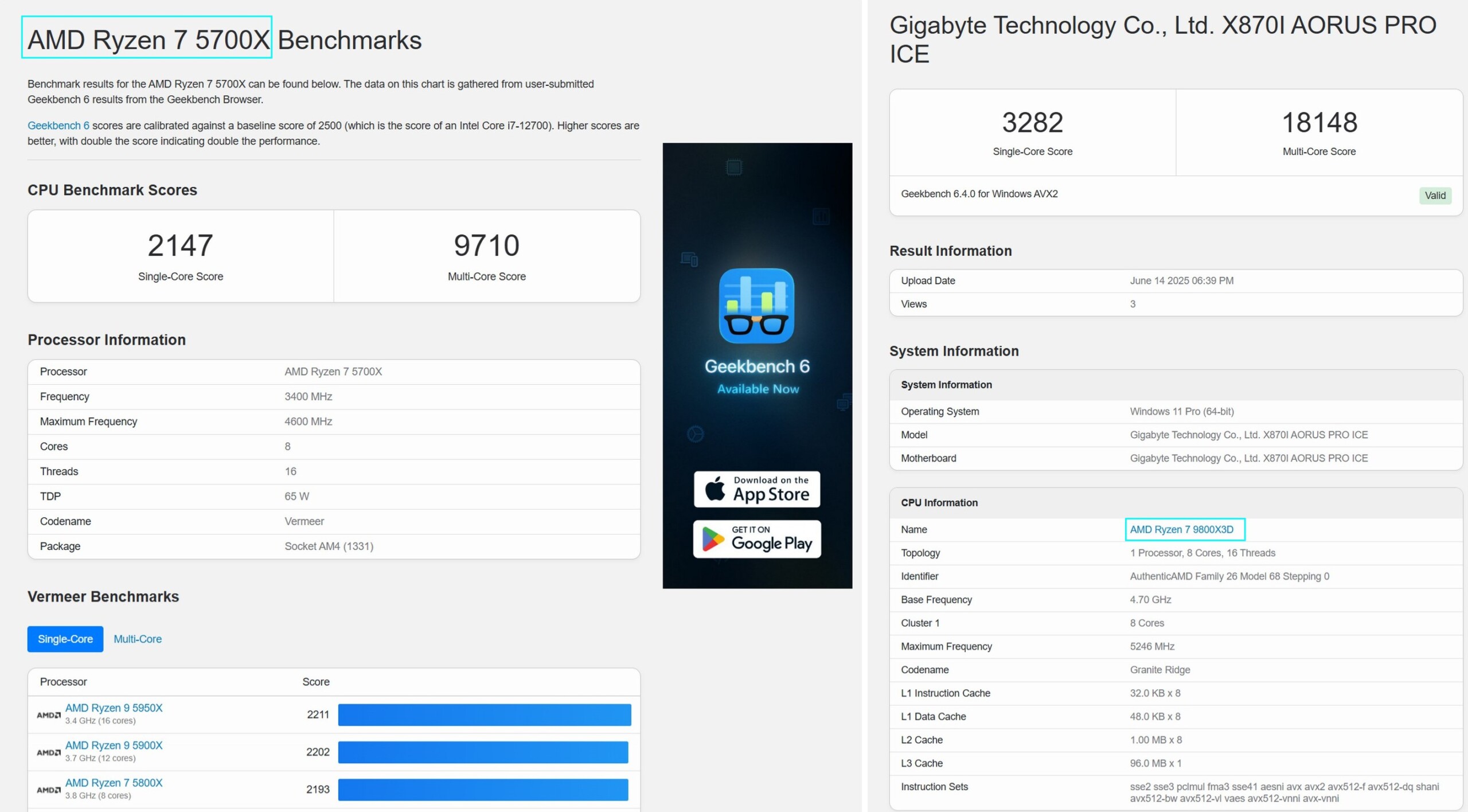 AMD Ryzen 7 9800X3D, in addition to being three generations apart from Ryzen 7 5700, has significant differences in architecture. According to the results of the GeekBench6 benchmark, AMD Ryzen 7 9800X3D is 53% faster in the single-core test and almost twice as fast in the multi-threaded test. And most importantly — use 3D V-Cache provides a great boost for increasing the number of frames in games (if you don’t rely on the video card’s performance).
AMD Ryzen 7 9800X3D, in addition to being three generations apart from Ryzen 7 5700, has significant differences in architecture. According to the results of the GeekBench6 benchmark, AMD Ryzen 7 9800X3D is 53% faster in the single-core test and almost twice as fast in the multi-threaded test. And most importantly — use 3D V-Cache provides a great boost for increasing the number of frames in games (if you don’t rely on the video card’s performance). 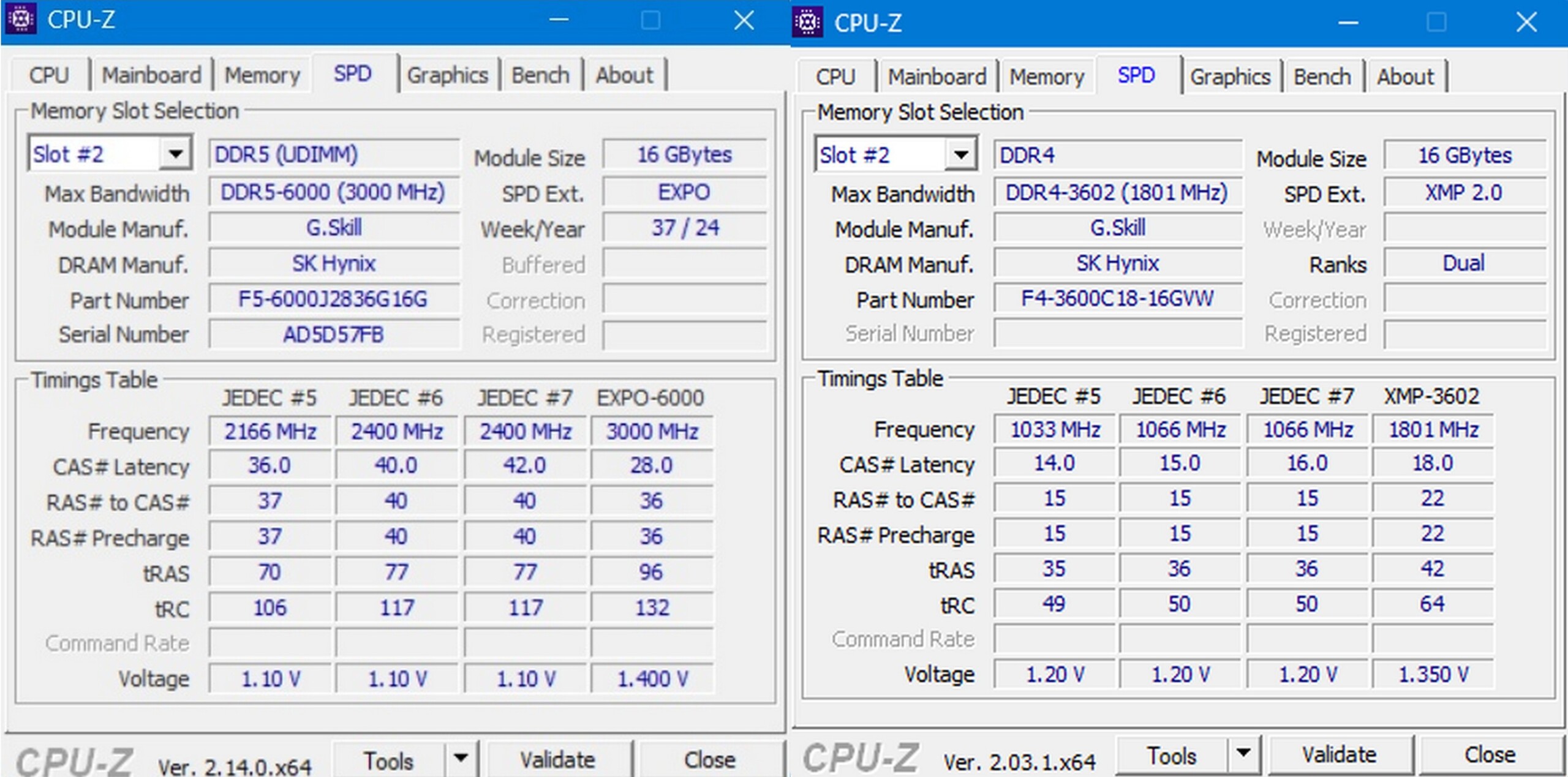
The third reason that could theoretically lead to a drop in FPS on AM4 — is the frequency of DDR4 memory compared to modern DDR5. Take the read speed for example: 80,704 MB/s (DDR5 6000) versus 54,693 MB/s (DDR4 3600).
And finally, it’s time to start testing. Due to the fact that NVIDIA has installed 16 gigabytes of GDDR7 video memory in the GeForce RTX 5060 Ti, we can even play in 4K resolution in some games, even on ultra settings. Although the video card is positioned by NVIDIA primarily for QuadHD and FullHD gaming.
A certain pattern emerges — The higher the resolution, the lower the variability of FPS between platforms. For example, in S.T.A.L.K.E.R. 2 at 4K there is no difference between the performance on Ryzen 7 9800X3D and Ryzen 7 5700. When using DLSS (Quality) and the frame generator (FG), the overlay demonstrates 57 frames per second.
In QuadHD, the difference is more significant. Without DLSS and Frame Generator, it is about 8% in favor of AM5. But with «and» neuroenhancers enabled, the difference drops to 6%, which is not significant.
Ryzen 7 9800X3D paired with NVIDIA GeForce RTX 5060 Ti allows you to see the Exclusion Zone at 100 fps, and Ryzen 7 5700, in turn, allows you to — 94 FPS. In FullHD, the difference increases again — about 11.5% with «normal rasterization» and 9.5% with DLSS and FG enabled.
 Indiana Jones and the Great Circle successfully uses Multi Frame Generation, which raises the frame counter to the sky. Here, the difference in performance between socket generations is already more significant This is the first game that requires the mandatory support of Ray Tracing technology to run.
Indiana Jones and the Great Circle successfully uses Multi Frame Generation, which raises the frame counter to the sky. Here, the difference in performance between socket generations is already more significant This is the first game that requires the mandatory support of Ray Tracing technology to run.
Indiana Jones and the Great Circle recently received full support for NVIDIA’s proprietary technologies, including DLSS 4 with Multi Frame Generation and path tracing technology — Path Tracing. The latter, in turn, requires serious video card performance and further increases video memory consumption.
By enabling Multi Frame Generation (x4), you can increase the FPS many times over and thus have a comfortable frame rate even with path tracing. At the same time, no artifacts are observed, and thanks to Path Tracing technology, the adventures of the famous adventurer reach a new graphical level. The picture acquires additional realism and depth, especially in closed rooms where many light sources intersect.
In general, Indiana Jones and the Great Circle is very demanding on both the video chip and the video memory subsystem, as it takes up a lot of space.
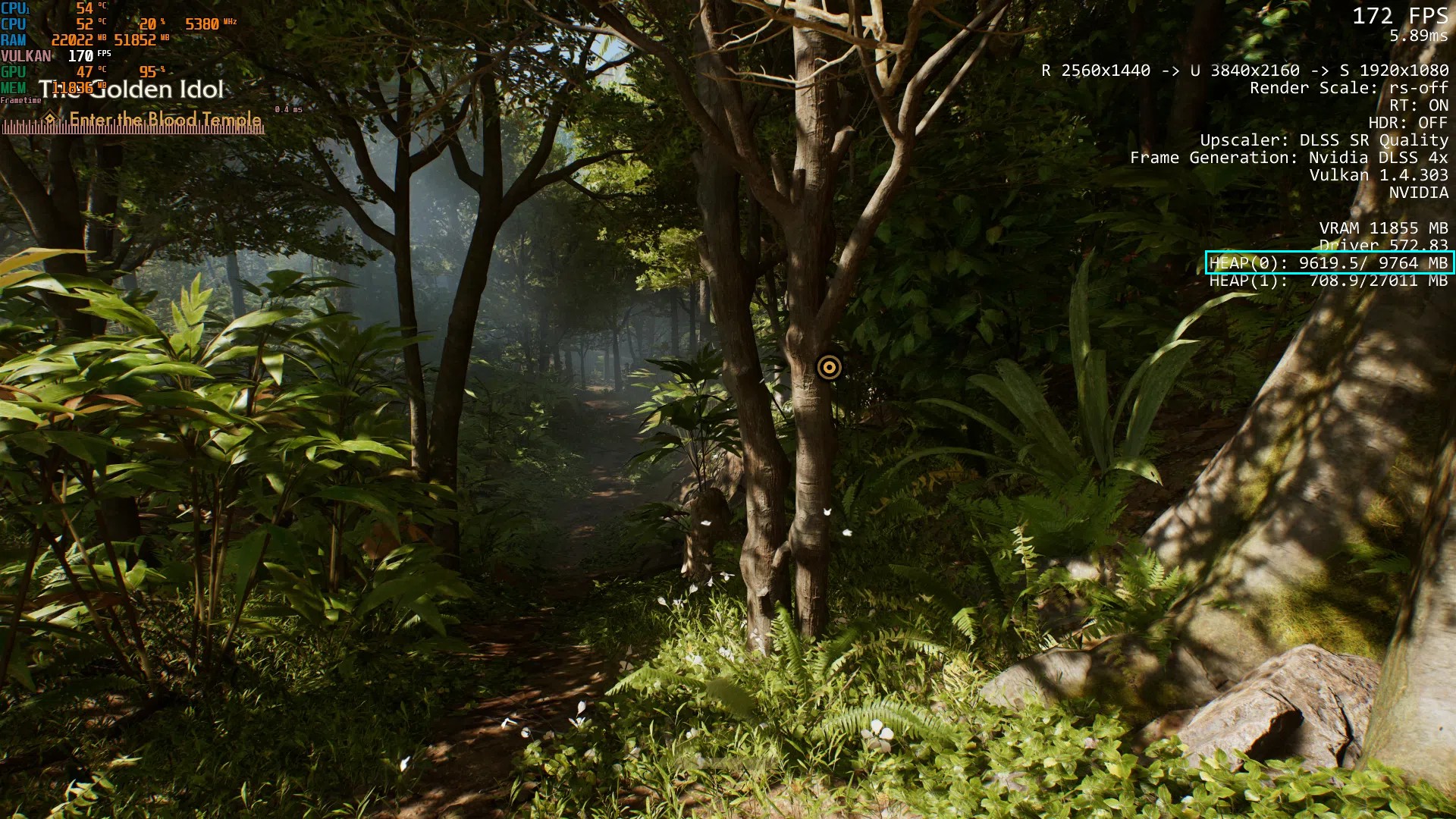
That’s why on video cards with 8 GB of video memory, gamers have to lower the settings to the medium preset, even on FullHD. Otherwise, the game may simply crash or the console may display errors, which is easy to check QuadHD, on the other hand, requires more than 9.5 gigabytes of video memory, and even more in some scenes. Nevertheless, at 1440p, with DLSS Quality and Multi Frame Generation, even on the AM4 socket, you can see 158 frames per second on your screens.
AM5 with Ryzen 7 9800X3D accelerates the game to 207 frames per second, which is 24% faster than AM4+ Ryzen 7 5700.

Cyberpunk 2077 the first to receive DLSS4 support with the Transformer and MFG models, shows no significant difference between the generations. It ranges from 6% in 4K to almost 14% in FullHD.
 Demanding on hardware and ruthless to players —Remnant 2 at the same time is loyal to AM4. In a resolution of 3840×2160 pixels, the difference in frames can sometimes be confused with a statistical error. For example, in 4K Ultra mode with DLSS and a frame generator, the difference is less than 3%. In QuadHD with NVIDIA’s neural technologies enabled, the difference is almost 8%. And then there’s the classic — The largest gap in AM5 can be seen in FullHD.
Demanding on hardware and ruthless to players —Remnant 2 at the same time is loyal to AM4. In a resolution of 3840×2160 pixels, the difference in frames can sometimes be confused with a statistical error. For example, in 4K Ultra mode with DLSS and a frame generator, the difference is less than 3%. In QuadHD with NVIDIA’s neural technologies enabled, the difference is almost 8%. And then there’s the classic — The largest gap in AM5 can be seen in FullHD.
У Counter Strike 2 on 4K and maximum quality preset observed full parity. Both platforms demonstrate 85 frames per second with NVIDIA GeForce RTX 5060 Ti. But the situation changes dramatically if we drop to FullHD with low eSports settings.
It is in this mode that you can see the greatest advantages of the Ryzen 7 9800X3D processor, which cannot be resisted even by older Intel models, even the Intel Core Ultra 9 285K. Returning to the confrontation with AMD Ryzen 7 5700 (AM4), it is worth noting that the lag in eSports mode is almost two times as great.
Still, 210 frames per second is not bad for AM4, considering that the platform will be 9 years old at the end of this year

Half-Life 2 RTX — is a demo version of the legendary game that gives gamers a great opportunity to enjoy the locations familiar from the original Half-Life 2 with support for realistic tracing technologies. RTX puts a lot of demands on the graphics card, and so far the game itself is not optimized enough. This was clearly visible not only during testing, but also in our editorial review.
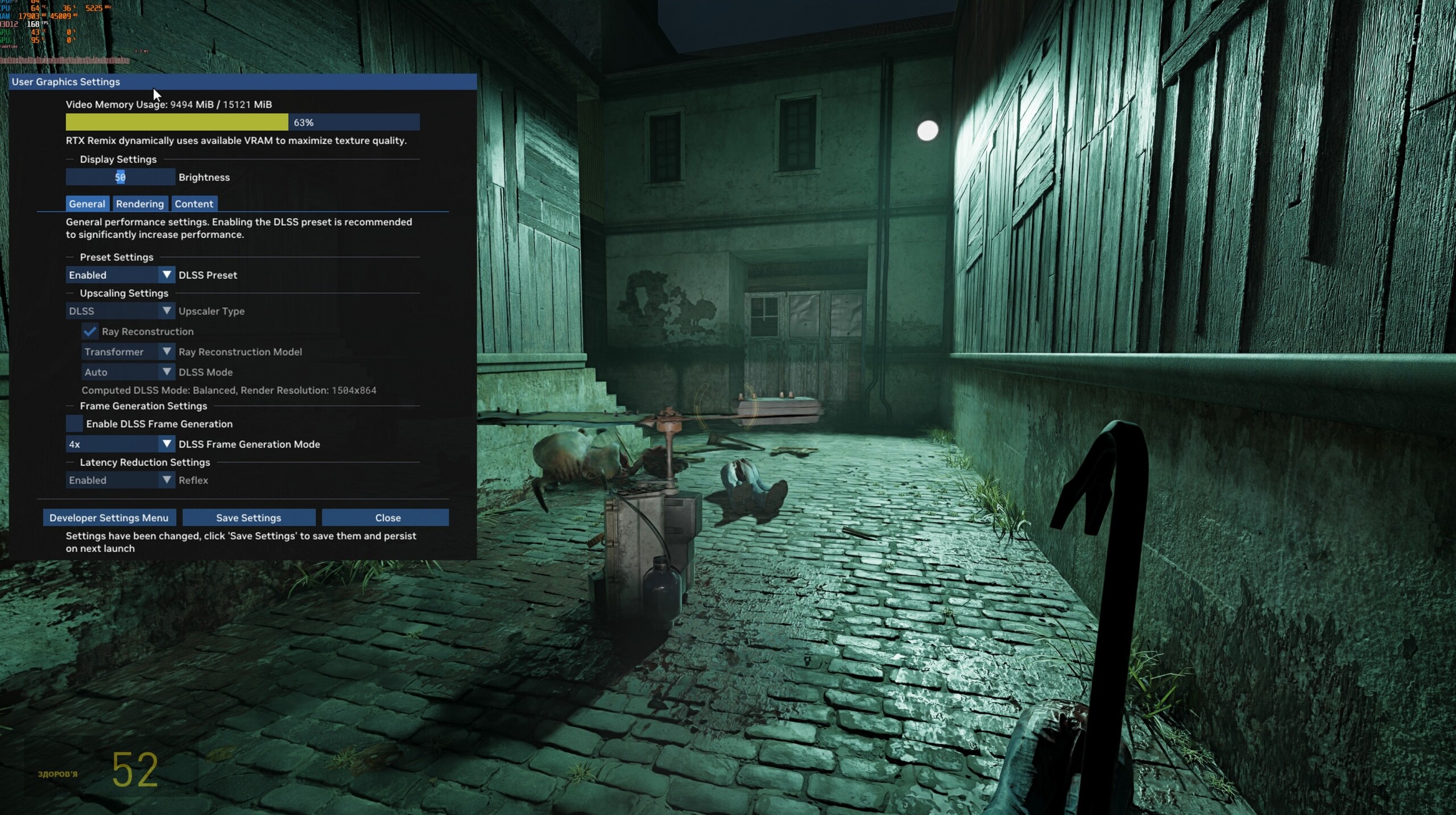
The game has not only full support for RTX, but also DLSS 4 and Multi Frame Generation. In addition to these, the game has its own upscalers — NIS and TAA-U, but they cannot provide the same image quality as NVIDIA DLSS. Ray tracing adds additional depth and immerses you in the gameplay.
В Half-Life 2 RTX The impact of ray tracing on the visuals is particularly noticeable, as there are many points of illumination, semi-darkness, glare, reflections, and effects.
Thanks to the combination of DLSS 4 technologies, we can fully appreciate the entire atmosphere of the famous Ravenholm in QuadHD at 100+ frames per second
Surprisingly enough, Ryzen 7 5700 paired with NVIDIA GeForce RTX 5060 Ti showed even better results than the AM5 platform
 Forza Horizon 5 turned out to be the most sensitive to platform changes. The game is famous for its excellent optimization, so you can play it with a comfortable frame rate on different systems. Nevertheless, NVIDIA GeForce RTX 5060 Ti in 4K on AM5 is 25% faster (100 fps).
Forza Horizon 5 turned out to be the most sensitive to platform changes. The game is famous for its excellent optimization, so you can play it with a comfortable frame rate on different systems. Nevertheless, NVIDIA GeForce RTX 5060 Ti in 4K on AM5 is 25% faster (100 fps).
In QuadHD, the advantage of AM5 over AM4 reaches 22.5% with DLSS and frame generator enabled. The largest gap is observed in FullHD mode with NVIDIA’s proprietary technologies enabled. The gap in this case is 34% in favor of AM5.

A Plague Tale: Requiem in 4K mode demonstrated benchmark results on both platforms, which were side by side, as they say: frame by frame. In QuadHD, the situation changed a bit, although with supersampling, frame generator, and raytracing enabled, the difference in framerate was minimal.

Behavior Avowed was somewhat reminiscent of Forza Horizon 5, although with some nuances. In the «mode of conventional» resampling without supersampling and any neurotechnology, there was no difference between them in 4K. But with DLSS4 + MFG at QuadHD, the AM4 lost 25%.
Although the FPS is still quite acceptable for passing — 79 fps on ultra preset

An interesting result was demonstrated by The Elder Scrolls IV: Oblivion Remastered. In this game, the performance difference at FullHD was less than at QuadHD, although not significantly
Summarizing the results
As you can see, it is not necessary to completely replace the PC platform to be able to enjoy gaming in QuadHD and even 4K. The only exceptions are games that require the maximum frame rate in esports disciplines. For everything else, it is enough to arm yourself with a mid-range graphics card, which we have seen in the example of NVIDIA GeForce RTX 5060 Ti. The difference in gaming performance between AM4 (Ryzen 7 5700) and AM5 (Ryzen 7 9800X3D) averaged 12%: in 4K it was minimal, in QuadHD — 10% in FullHD as well — the largest.
In games that support DLSS4 and MFG technologies, we managed to get the biggest FPS boost. Therefore, if you don’t want to completely change your PC and own an AM4 platform, I have good news for you, because it’s too early to write it off.
MSI GeForce RTX 5060 Ti 16G Gaming Trio OC and many other models of the NVIDIA GeForce RTX 50 can be purchased at Telemart.ua.




Spelling error report
The following text will be sent to our editors: